Application of Cell Painting for chemical hazard evaluation in support of screening-level chemical assessments
- PMID: 37044265
- PMCID: PMC11917499
- DOI: 10.1016/j.taap.2023.116513
Application of Cell Painting for chemical hazard evaluation in support of screening-level chemical assessments
Abstract
'Cell Painting' is an imaging-based high-throughput phenotypic profiling (HTPP) method in which cultured cells are fluorescently labeled to visualize subcellular structures (i.e., nucleus, nucleoli, endoplasmic reticulum, cytoskeleton, Golgi apparatus / plasma membrane and mitochondria) and to quantify morphological changes in response to chemicals or other perturbagens. HTPP is a high-throughput and cost-effective bioactivity screening method that detects effects associated with many different molecular mechanisms in an untargeted manner, enabling rapid in vitro hazard assessment for thousands of chemicals. Here, 1201 chemicals from the ToxCast library were screened in concentration-response up to ∼100 μM in human U-2 OS cells using HTPP. A phenotype altering concentration (PAC) was estimated for chemicals active in the tested range. PACs tended to be higher than lower bound potency values estimated from a broad collection of targeted high-throughput assays, but lower than the threshold for cytotoxicity. In vitro to in vivo extrapolation (IVIVE) was used to estimate administered equivalent doses (AEDs) based on PACs for comparison to human exposure predictions. AEDs for 18/412 chemicals overlapped with predicted human exposures. Phenotypic profile information was also leveraged to identify putative mechanisms of action and group chemicals. Of 58 known nuclear receptor modulators, only glucocorticoids and retinoids produced characteristic profiles; and both receptor types are expressed in U-2 OS cells. Thirteen chemicals with profile similarity to glucocorticoids were tested in a secondary screen and one chemical, pyrene, was confirmed by an orthogonal gene expression assay as a novel putative GR modulating chemical. Most active chemicals demonstrated profiles not associated with a known mechanism-of-action. However, many structurally related chemicals produced similar profiles, with exceptions such as diniconazole, whose profile differed from other active conazoles. Overall, the present study demonstrates how HTPP can be applied in screening-level chemical assessments through a series of examples and brief case studies.
Keywords: Cell Painting; Computational toxicology; Concentration-response; High-throughput phenotypic profiling.
Published by Elsevier Inc.
Conflict of interest statement
Declaration of Competing Interest The authors declare no conflict of interest. This manuscript has been reviewed by the Center for Computational Toxicology and Exposure, Office of Research and Development, U.S. Environmental Protection Agency, and approved for publication. Approval does not signify that the contents reflect the views of the Agency, nor does mention of trade names or commercial products constitute endorsement or recommendation for use.
Figures

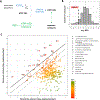

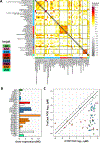

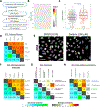
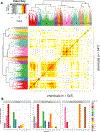
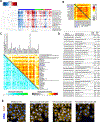
Similar articles
-
Bioactivity screening of environmental chemicals using imaging-based high-throughput phenotypic profiling.Toxicol Appl Pharmacol. 2020 Jan 15;389:114876. doi: 10.1016/j.taap.2019.114876. Epub 2019 Dec 30. Toxicol Appl Pharmacol. 2020. PMID: 31899216 Free PMC article.
-
Combining phenotypic profiling and targeted RNA-Seq reveals linkages between transcriptional perturbations and chemical effects on cell morphology: Retinoic acid as an example.Toxicol Appl Pharmacol. 2022 Jun 1;444:116032. doi: 10.1016/j.taap.2022.116032. Epub 2022 Apr 26. Toxicol Appl Pharmacol. 2022. PMID: 35483669 Free PMC article.
-
High-Throughput Transcriptomics Screen of ToxCast Chemicals in U-2 OS Cells.Toxicol Appl Pharmacol. 2024 Oct;491:117073. doi: 10.1016/j.taap.2024.117073. Epub 2024 Aug 17. Toxicol Appl Pharmacol. 2024. PMID: 39159848
-
High-throughput PBTK models for in vitro to in vivo extrapolation.Expert Opin Drug Metab Toxicol. 2021 Aug;17(8):903-921. doi: 10.1080/17425255.2021.1935867. Epub 2021 Jun 15. Expert Opin Drug Metab Toxicol. 2021. PMID: 34056988 Free PMC article. Review.
-
Exposure forecasting - ExpoCast - for data-poor chemicals in commerce and the environment.J Expo Sci Environ Epidemiol. 2022 Nov;32(6):783-793. doi: 10.1038/s41370-022-00492-z. Epub 2022 Nov 8. J Expo Sci Environ Epidemiol. 2022. PMID: 36347934 Free PMC article. Review.
Cited by
-
Searching for LINCS to Stress: Using Text Mining to Automate Reference Chemical Curation.Chem Res Toxicol. 2024 Jun 17;37(6):878-893. doi: 10.1021/acs.chemrestox.3c00335. Epub 2024 May 13. Chem Res Toxicol. 2024. PMID: 38736322 Free PMC article.
-
Bridging imaging-based in vitro methods from biomedical research to regulatory toxicology.Arch Toxicol. 2025 Apr;99(4):1271-1285. doi: 10.1007/s00204-024-03922-z. Epub 2025 Feb 13. Arch Toxicol. 2025. PMID: 39945818 Free PMC article. Review.
-
Cell Painting PLUS: expanding the multiplexing capacity of Cell Painting-based phenotypic profiling using iterative staining-elution cycles.Nat Commun. 2025 Apr 24;16(1):3857. doi: 10.1038/s41467-025-58765-8. Nat Commun. 2025. PMID: 40274798 Free PMC article.
-
Bioactivity of the ubiquitous tire preservative 6PPD and degradant, 6PPD-quinone in fish- and mammalian-based assays.Toxicol Sci. 2025 Apr 1;204(2):198-217. doi: 10.1093/toxsci/kfaf008. Toxicol Sci. 2025. PMID: 39842856
-
A morphology and secretome map of pyroptosis.Mol Biol Cell. 2025 Jun 1;36(6):ar63. doi: 10.1091/mbc.E25-03-0119. Epub 2025 Apr 9. Mol Biol Cell. 2025. PMID: 40202832
References
-
- Baltazar MT, Cable S, Carmichael PL, Cubberley R, Cull T, Delagrange M, Dent MP, Hatherell S, Houghton J, Kukic P, Li H, Lee M-Y, Malcomber S, Middleton AM, Moxon TE, Nathanail AV, Nicol B, Pendlington R, Reynolds G, Reynolds J, White A, Westmoreland C, 2020. A Next-Generation Risk Assessment Case Study for Coumarin in Cosmetic Products. Toxicological sciences : an official journal of the Society of Toxicology 176, 236–252. - PMC - PubMed
-
- Bougen-Zhukov N, Loh SY, Lee HK, Loo LH, 2017. Large-scale image-based screening and profiling of cellular phenotypes. Cytometry A 91, 115–125. - PubMed
Publication types
MeSH terms
Grants and funding
LinkOut - more resources
Full Text Sources

